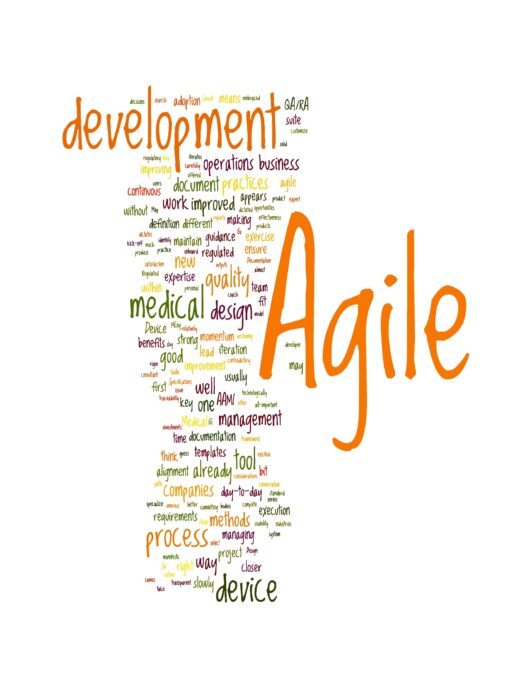
Six Considerations when implementing Agile in medical device development
At first glance, the Agile manifesto appears contradictory to the rigor of medical device development practices, but true conformity lies in the quality of execution.
Agile in medical device development is by no means a new concept. Many complex Enterprise Partnership projects have already embraced this as an effective process for improving the quality, usability and effectiveness of their diagnostic products [1-3].
Here are a handful of considerations when someone from your development team comes knocking with the word ‘Agile’.
- Agile is not so different Most companies default to the waterfall or V-model for definition of their design control process. In practice, this execution of this model is not so different from Agile. Waterfall by definition dictates that you must complete one development activity before commencing on the next. It is almost impossible to fully define your requirements without some preliminary architecture and development work to validate that a requirement is well posed and technologically feasible. In doing that exercise, you are iterating and improving. Agile is a method which iterates in a more controlled and transparent fashion.
- Consult the AAMI Guidance document Agile development is well accepted by the regulatory bodies we so often shy away from. In 2012, the AAMI released the TIR45 guidance document to steer medical device design and development companies on how to work Agile within a regulated process. A solid review of this guidance document is the first place to start for new users or veterans alike in Agile development. It gets right to the heart of the issue and demonstrates clear alignment with the all-important IEC 62304 standard.
- Map your day-to-day practices and templates An important exercise on the path to Agile is a conversation (or rather a series of conversations) with your lead software developers, project management and your QA/RA department. The goal is to introduce Agile without interrupting those aspects of your process that are already functional and relatively efficient. In many cases, it is much less onerous to conform to forms, templates and documentation requirements dictated by your QMS than it initially appears. The key is to identify what outputs you plan to produce in your Agile process (user stories, documentation, verification reports) and decide how that will fit within your framework. A bit of flexibility on both sides of the table will make for a low-stress adoption.
- Find a good tool and customize it Agile is a way of working, but it relies heavily on having a good tool for managing workflow. Deciding to incorporate Agile methods to your development processes usually means you are also committing to adopt a new tool. Evaluate your options carefully and select one built for Agile. My personal favorite is the popular product suite offered by Atlassian JIRA. With a bit of simple customization, this tool can host the full suite of User Requirements, Design Specifications, Architecture Documentation, Verification Plans, and more. Configure it well and you will have the holy grail of search, archiving, and traceability in a single integrated repository.
- Go slowly, gain momentum Getting excited about Agile is a great way to kick-off the initiative. A critical mass usually starts with an alliance between representatives from your lead developer(s), project management, and QA/RA. The key to a successful implementation of Agile is demonstrable benefits with minimal disruption to day-to-day operations and business goals. Going slowly and making good decisions along the way will ensure that you maintain commitment to Agile and momentum for continuous improvement.
- Hire an Agile coach Companies that specialize in medical device development already invest significant time, resources and dollars in an effort to tune operations and maintain their quality management system. Hiring a consultant with specific expertise in Agile methods will be one of your best investments. An expert can take a lot of guess work out of the equation, ensure you are making the right choice for your operations, help onboard the team, and speed up the adoption phase.
Agile is iteration and iteration is required in Medical Device design anyway, so you may be closer than you think!
- Agile in an FDA Regulated Environment
- “We have shown that agile practices are not only compatible with regulated industries but can be implemented in ways that provide strong support for compliance with regulations.” Being agile while still being compliant
- “The benefits of Agile include improved quality, more opportunities for midcourse corrections, improved customer or business satisfaction, better alignment between business and IT and improved time to market.” GE Healthcare Gets Agile
Heidi Giesbrecht, MEng is a former StarFish Medical Project Manager and a cross-functional leader in medical device development. This is her first StarFish blog and Wordle image.
Image: http://www.edwordle.net/
